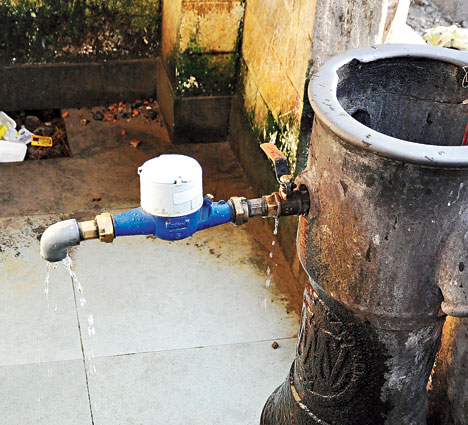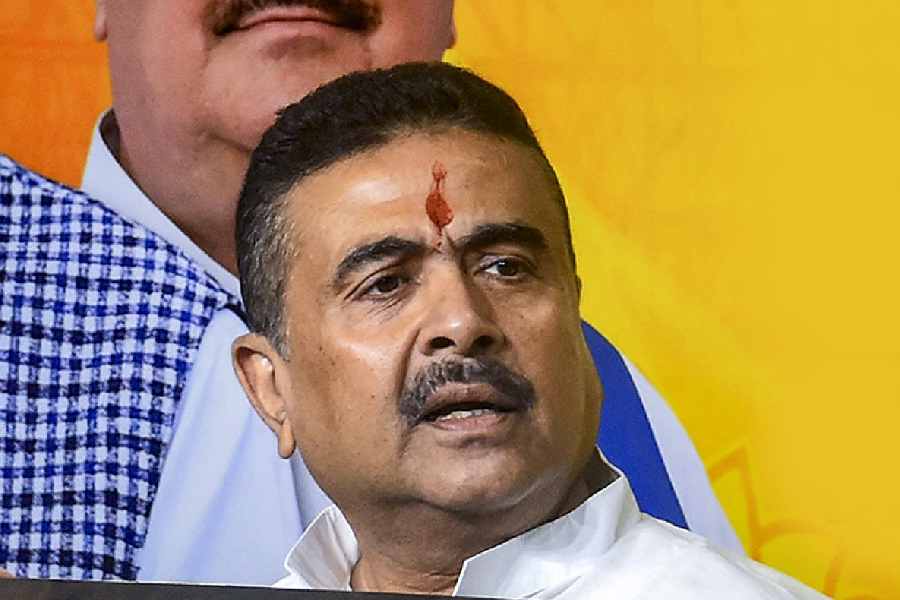
Picture by Anup Bhattacharya
Calcutta: Water meters installed in about 1,000 houses across north Calcutta as part of a pilot project have shown that the average resident uses up four times the national consumption benchmark, pointing to wastage on a colossal scale.
National per capitaconsumption, calculated by the Central Public Health and Environmental Engineering Organisation, is 135 litres a day. In the houses where meters have been installed, civic officials have found daily per capita consumption to be around 600 litres. Consumption in some households is 800 litres per person each day.
"These statistics clearly show that Calcuttans misuse water because it is still not scarce in our city," said an engineer associated with the project.
The Hooghly's proximity to the city gives the Calcutta Municipal Corporation and other municipalities the easiest possible access to a water source, a luxury that cities like Mumbai don't have. Water from the river is treated at Polta and other plants before being supplied to homes through an underground network of pipes.
Although water wastage is no secret in a city where roadside taps don't even have valves, the meter readings have left CMC engineers startled. "Per capita consumption of 600 litres and higher is a new discovery. We had previously benchmarked it at 300 litres," a civic engineer said.
The 1,000 households whose water consumption data was studied are spread across wards 2 to 5 and include neighbourhoods like Paikpara and Belgachhia.

The project team took readings at intervals of seven days. An engineer said a week's reading was divided by 7 and then by the number of people in a particular household to arrive at the per capita daily consumption.
"Nearly half of the households were found to consume about 600 litres per person," said the CMC engineer.
Hydrology expert Kalyan Rudra, who is also the chairman of the state pollution control board, called water wastage "ethically wrong."
He said it was a fallacy that the Hooghly would ensure that the city never ran out of water. "The western tributaries of the Hooghly have already dried up. At this time of the year, the river's source of replenishment is mostly tidal water. This itself is an alarming situation. We shouldn't think that we can waste this resource."
Only about 400 buildings, most of them institutions and large apartment blocks, currently pay the municipal corporation for treated water based on consumption.
Trinamul leader Subrata Mukherjee had proposed to introduce water tax when he was the mayor of Calcutta between 2000 and 2005, but Mamata Banerjee did not allow that to happen. Bikash Ranjan Bhattacharyya of the CPM, who was the mayor between 2005 and 2010, did not go ahead with the proposal either.
The national consumption benchmark of 135 litres is based on a two-part assessment of the daily water needs of a person. "Ninety litres a day are used in the toilet and to wash clothes and utensils. Another 45 litres are required for drinking, bathing and cooking," said Ashok Tawadia, chief engineer of the Brihanmumbai Municipal Corporation's water supply department.
Officials of the CMC and the state government are convinced that the only way to stop wastage is to charge consumers for water. "Do we waste electricity? You will see there is a rate at the back of an electricity bill showing that the tariff increases if you use up more units of electricity. There are slabs to encourage optimal use and discourage wastage," an official said.
Officials and engineers of municipal corporations in Mumbai and water boards in Chennai, Bangalore and Delhi told Metro that residents have to pay for water in all these cities. The tariff rises with increase in consumption beyond slabs.
Engineers in the CMC have found the level of water wastage the highest in localities close to Talla tank. These areas receive nearly 18 hours of water supply daily while Kasba, Jadavpur and Behala get less than four hours of supply.
"Charging for overuse can reduce wastage of water, although that is a political decision that we cannot take," a civic engineer said.










